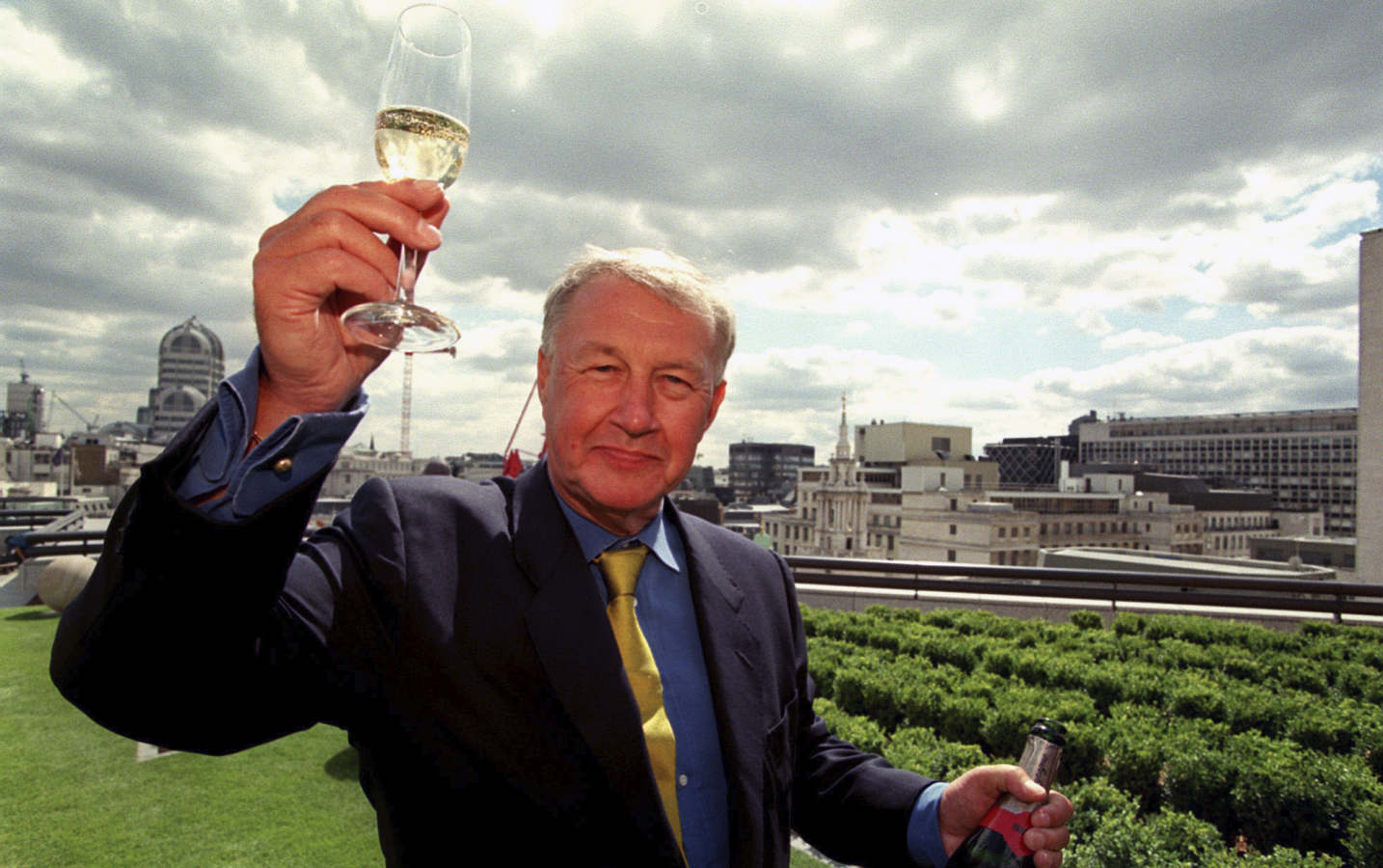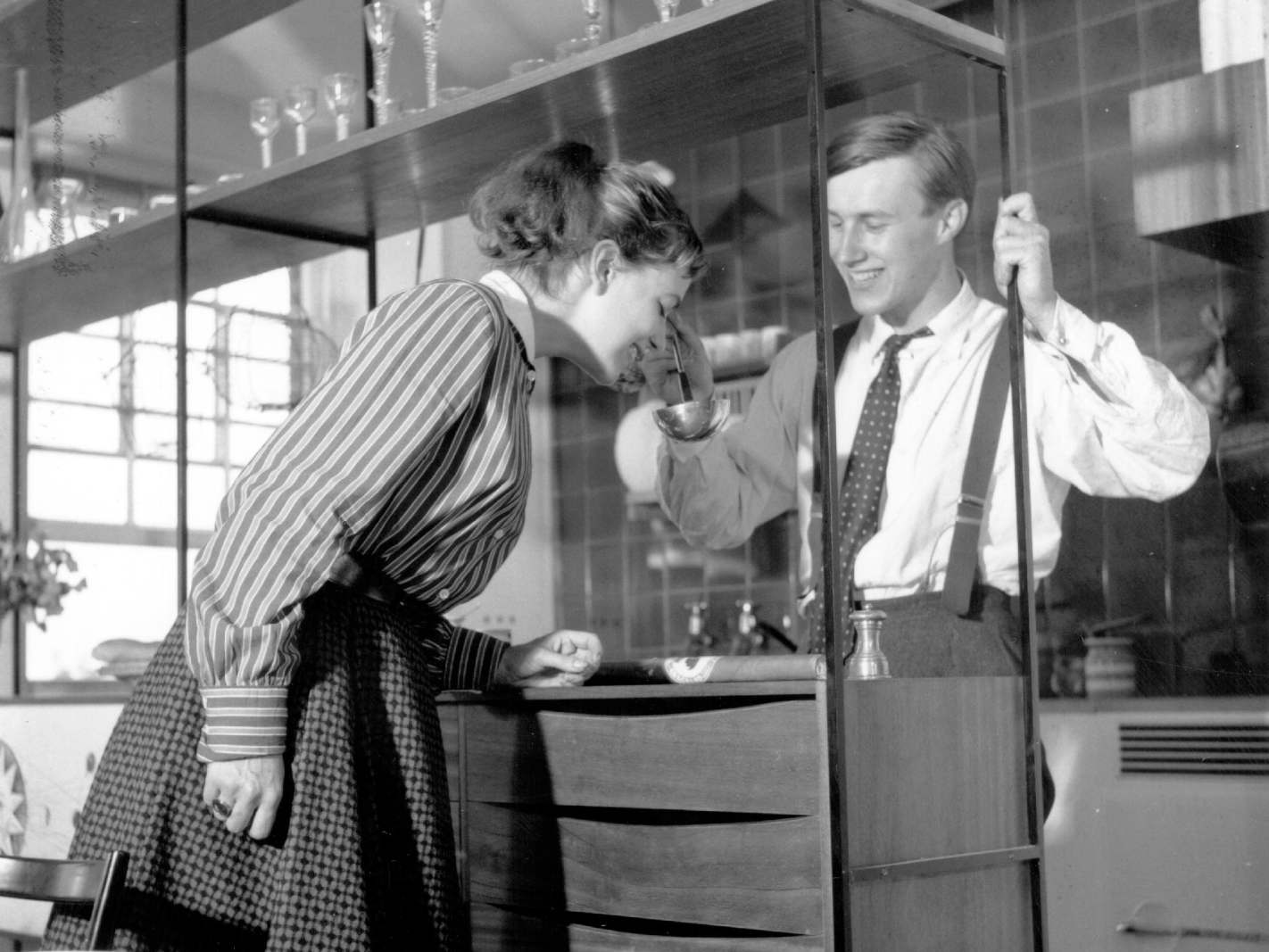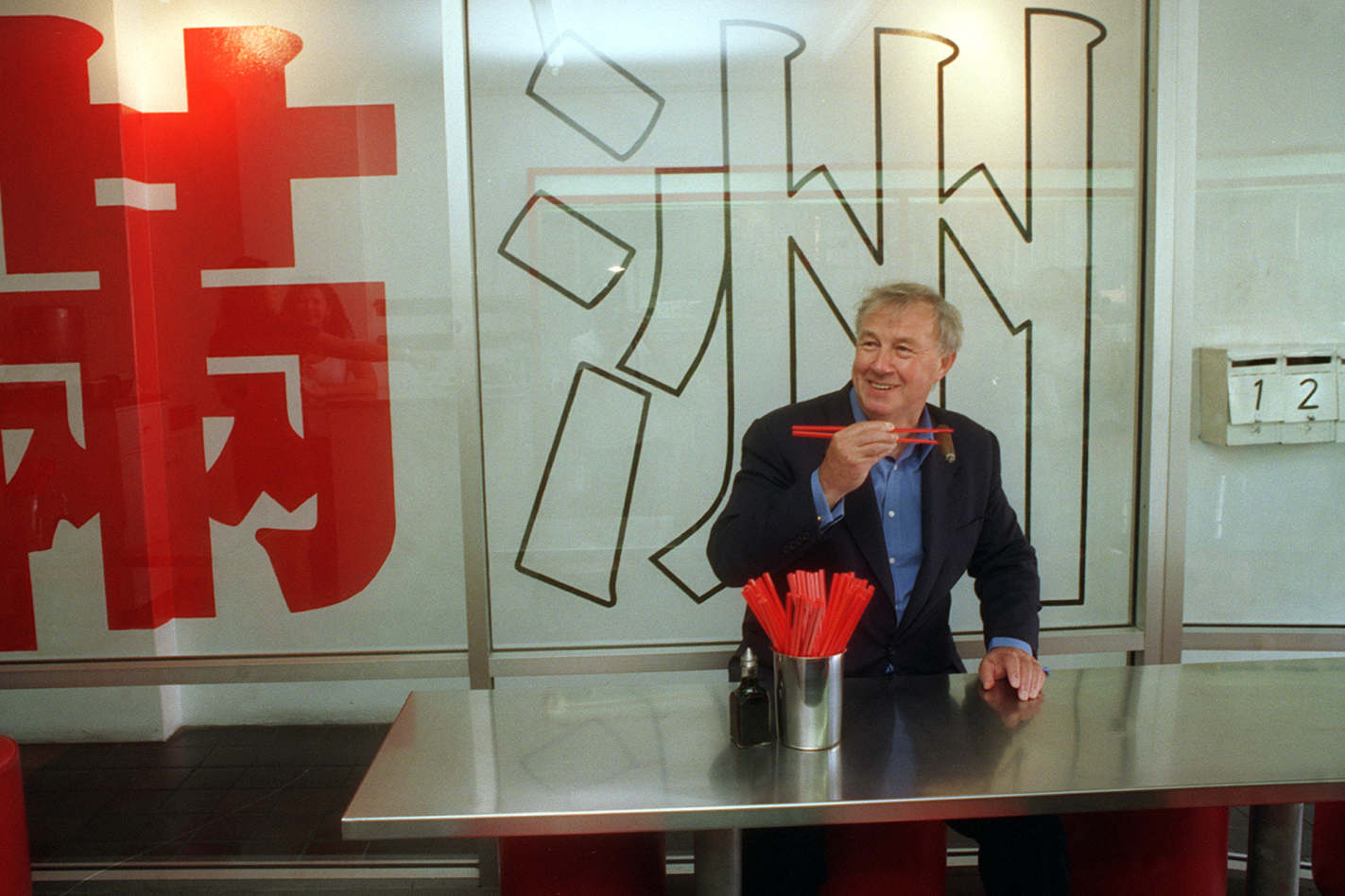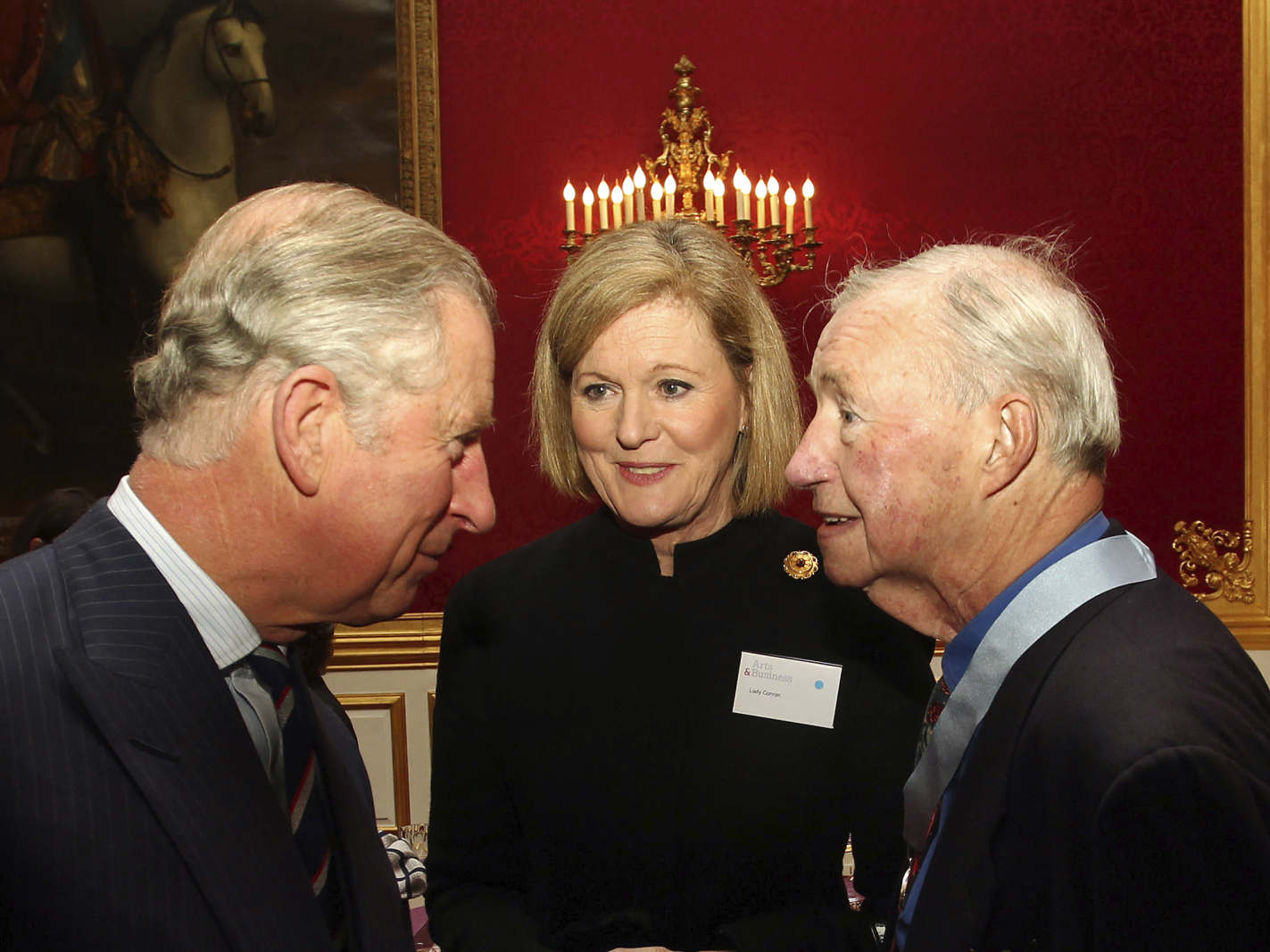Designer transformed home decor and dining out
SIR TERENCE CONRAN: 1931-2020
Sir Terence Conran, who has died aged 88, probably did more than anybody to revolutionise Britain’s approach to dining out, the look of our homes, the way we shop and the things we buy; no one had as much influence on national taste in the post-war period.
Conran came to the public eye when he opened his first Habitat store off the King’s Road in 1964. It was the antithesis of the fussy, ugly and inconvenient British department stores of the 1950s, its attractively packaged, eclectic range – white tiles, Sabatier knives chrome-plated steel Bauhaus chairs, modular shelving, chicken bricks and duvets – made it essential for upwardly mobile middle- class youth. Its self-service ethos, elegant affordability and stylish layout helped to turn shopping from a dispiriting chore to one of Britain’s favourite leisure pursuits.

As a designer Conran was a magpie rather than an original. His talent lay in taking ideas from others and synthesising them into his own. It was in salesmanship, however, that his true genius lay. A preview of the first Habitat collection in The Sunday Times was headlined “What the smart chicks are buying” – Bertoia birdcage chairs and Japanese paper lampshades, it seemed. Habitat evolved with the consumer media, supplying items for the home that people never realised they needed but discovered they could not get by without.
Design history tends to forget the Conran restaurants. But Conran started his career in 1953 serving “exotic” French baguettes, onion soup and real espresso coffee at the Soup Kitchen cafe off the Strand, and food remained the centre of his vision. After all, it was a small step from wanting to cook a ratatouille, a demi-poulet or a daube, to wanting the batterie de cuisine to cook them with. Habitat provided this – and furniture and furnishings beside.
The 1990s were Conran’s heyday as a restaurateur, with huge fin de siècle venues such as Bibendum, Mezzo and Quaglino’s transforming dining out into a theatrical experience. While the standard of cuisine varied, the approach was so successful that a Conran restaurant became a status symbol for provincial cities looking to inject a buzz into their city centres.
If there was a fault with Conran’s vision, it was of overestimating the public’s appetite for self-improvement. He could never quite accept that there might be people who would actually choose easy-care nylon sheets over impossible-to-iron air-dried linen.
This became a problem after Habitat went public in 1981, took over Heal’s and Mothercare, and then, in 1985, merged with the mass-market retailer British Home Stores to create Storehouse, the then 12th biggest retailer in Britain.
It had been Conran’s great dream to run a large group of stores, but it was an unhappy union. He appeared to believe that if BHS customers were exposed to improving examples, they would acquire Habitat habits. On his arrival at one BHS store was said to have remarked of a pink frilly dressing gown on display: “That is pure Coronation Street. I don’t care whether it is a bestseller, I will not have it in my shop”.
BHS customers proved impervious to improvement and BHS buyers, initially enthusiastic, began to complain that they were being imposed upon. Critics in the City accused Conran of destroying BHS’ mass-market base with his elitism. Worse still, the complexities of running such a large empire took their toll on Habitat. By the mid-1980s it was nicknamed Shabbitat.
Conran yielded to pressure and brought in Michael Julian as chief executive but relations soon soured, and in 1990 Conran left Storehouse, saying that he would not take on the role of an impotent figurehead. He had to sell his shares for only a third of what they had been worth; Habitat was later sold to Ikea.
But Conran returned to his niche market roots and came back fighting. He built up a new empire based on the Conran shops and restaurants, and expanded overseas.
Conran was a strange combination of opposites: controlling, bullying and perfectionist, but shy, gauche and socially inept; generous with his time and hospitality yet mean and penny-pinching in small things. One observer described him as having “the inclinations of a puritan with the tastes of a voluptuary”.
These qualities – to which he added a healthy sexual appetite (“Terence loves pushing secretaries into cupboards,” a friend once said) made him a difficult man to live with. His family included four wives, three of whom left him, and five children, four of whom followed him into the design or “lifestyle” business. In contrast to the clean lines of his designs, the Conran family story was a rollercoaster mess of love, hate, in-fighting, betrayal and general emotional dysfunction.
Terence Orby Conran was born in Esher on October 4, 1931. His father, Rupert, was a businessman, “prone to nasty moods when drunk”. His mother, Christina, was a housewife with literary interests who doted on her only son. The family had been prosperous but his grandparents lost everything in the 1929 crash, which meant his parents found themselves reduced to genteel poverty.
His mother ensured that Conran and his younger sister Priscilla had a creative upbringing. A dreamy, rather solitary child, he pressed wild flowers, collected butterflies and stamps and loved making things. He built a kiln at the end of the garden, and acquired a lathe as a swap with a publican. When he had appendicitis aged 12, he sat in bed making doll’s furniture to sell to the local toy shop. He spent his profits on tools.
Conran was educated at Bryanston in Dorset, a progressive establishment where woodwork was regarded as important as Latin or games. Many of the teachers were conscientious objectors. “There was a feeling that we were educated to change how we looked at things,” he recalled.
This feeling was heightened at the Central School of Art in London where he studied textile design, absorbed Bauhaus ideals and was taught by the sculptor Eduardo Paolozzi, who became a personal friend. Paolozzi’s influence extended beyond the studio into the kitchen. “Eduardo once cooked us a squid-ink risotto, and I just thought this black ink was the most wonderful thing ever,” Conran recalled.
After leaving art school, Conran set up a furniture-making business in an East End studio which he shared with Paolozzi, producing steel-legged coffee tables, cane-topped stools and basket chairs with three legs. Home was a basement flat shared with the first of his four wives, Brenda Davison, an architect who married him on the rebound in 1952. Five months later her ex-beau reappeared and she left. She was not mentioned in Conran’s Who’s Who entry.
Conran did not go abroad until he was 21, when he visited France and worked as a skivvy in the subterranean kitchens of a chic Paris restaurant. He was astonished by “this place where they had never heard of rationing” and everyone seemed socially at ease, and wondered if it might be possible to import some French magic into Britain.
His first opportunity came when he worked as a designer helping the architect Dennis Lennon to create “jolly continental cafes” on the South Bank for the 1951 Festival of Britain.
In 1953, with friends, he started up his Soup Kitchen business. On the day it opened, a group of tramps turned up hoping for a free meal, but the sight of quarry-tiled floors, cane-seated chairs and a Gaggia coffee machine soon persuaded them that this was not the Salvation Army.

The following year he opened the Orrery, off King’s Road in Chelsea, where a young would-be journalist, Shirley Pearce, went to work as a waitress. They married in 1955 and had two sons, Sebastian, the product designer, and Jasper, the fashion designer, before they split in 1959 (“Two selfish people living together” was his sister Priscilla’s verdict).
Shirley Conran went on to achieve fame as the author of Superwoman and of such novels as Lace and The Revenge of Mimi Quinn (a thinly veiled account of her break-up with Conran) – the sort of fare, as her ex-husband put it, that “people will read on the beach in Torremolinos.”
They divorced in 1962, and though they maintained a somewhat rebarbative friendship, she too was omitted from his Who’s Who entry.
The following year Conran married Caroline Herbert, a food writer with whom he had three more children, Ned, an artist and latterly a restaurateur, Tom, proprietor of fashionable Notting Hill restaurants, and Sophie, a sometime buyer for Conran Enterprises.
Through the 1950s, as well as running his restaurants, Conran built up his furniture business, and in the early 1960s moved the centre of operations to Thetford in Norfolk. It was there that he began to produce his first range of domestic furniture – flat-pack for people to assemble themselves. He took an exhibition stand at Earl’s Court and won orders from about 80 retailers.
In 1963 he decided to visit some of the retailers but, horrified to find that few had even bothered to assemble the furniture for display, he decided to show how it should be done. Habitat was the result. Influenced by the cookery writing of Elizabeth David, he saw a gap in the market for the kitchen equipment to go with his furniture. It was the first time anyone had put everything for the modern home under one roof.
Habitat became a place to hang out. George Harrison was mobbed by fans on a shopping trip with Patti Boyd; Jean Shrimpton was a customer, as were Twiggy and Justin de Villeneuve, Peter Sellers, Michael Caine – and so forth. Kingsley Amis courted Elizabeth Jane Howard among the pots and pans in the basement. The first shop became a chain – and then an empire.
Although he faltered with the Storehouse group, the 1980s were years of great achievement in other ways. In 1981 he established the Boilerhouse Project at the Victoria & Albert Museum which metamorphosed in 1987 into the Design Museum – possibly his greatest cultural triumph. (In 2011 he donated £17.5 million to fund the Museum’s move to a larger site, formerly the Commonwealth Institute in west London, which opened in 2016.)
In 1983 he founded Conran Octopus, which became a publisher of illustrated “lifestyle” books. His flagship Conran Shop, along with his first modern restaurant, Bibendum, opened in 1987 in the Michelin Building on Fulham Road in London.
But the early 1990s were overshadowed by the acrimonious breakdown of his third marriage after frequent infidelities. In 1996 he had to disgorge £6.2 million in cash, plus a £1.1 million house in Belgravia, another in Dorset and jewellery and cars. Caroline Conran, the judge explained, was a “beautiful, creative, energetic and instinctively stylish woman”, and Conran was “too dismissive” of her role in the business. “It can be difficult for a man with a healthy ego who has achieved a vertiginous success to look down and discern a contribution other than his own.”

For a while afterwards, he did not speak to her, complaining that “the most expensive things in my life are my ex-wives”, and the next few years were punctuated with further unwelcome publicity about his family. In 1998 Shirley Conran went public with tales of how Terence had refused to pay for their son Jasper’s college education and complaining of the “drip, drip, drip of negativity” that had destroyed their marriage (“In our family, you don’t so much swim as drown,” Jasper was quoted as saying).
The worldly successes of four of his offspring were overshadowed by the tragedy of his youngest son Ned, who was committed to a secure psychiatric hospital in 2002 after being found guilty of subjecting an American tourist to a brutal sex attack in a park in west London. He recovered and became a successful restaurateur.
By the new century the Conran Group owned 44 restaurants, bars, cafes, clubs and food stores, a fistful of Conran shops across the globe, as well as a big architecture and design practice. A personal fortune estimated in 2008 at £76 million bought Conran an 18th-century house in Berkshire, a farmhouse in Provence, a penthouse apartment in London, as well as fine cigars, grand burgundies, bespoke shirts and a valuable collection or art and furniture.

A restless man with a low boredom threshold, Conran was horrified by the idea of retirement and confessed that his dearest wish was to “die with a major unfinished project on my mind”.
The Telegraph, London